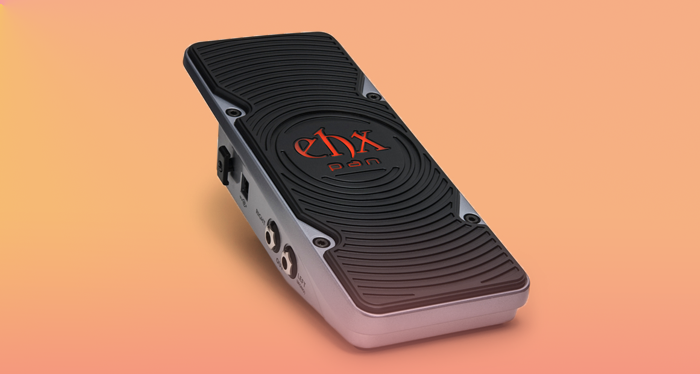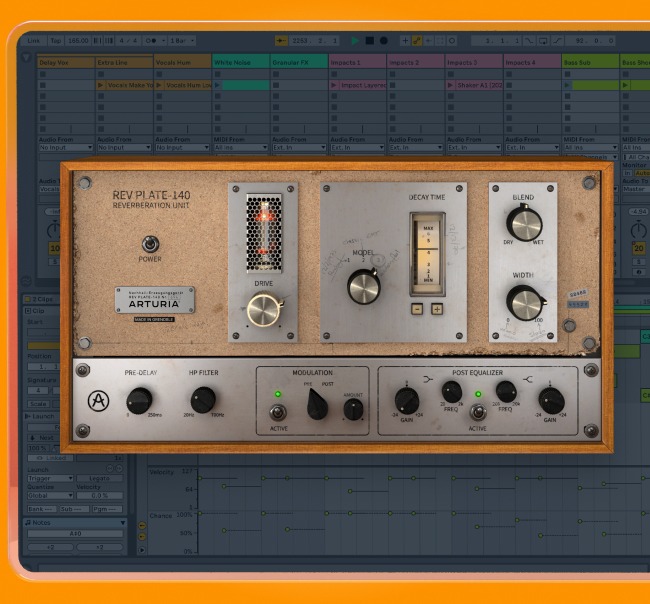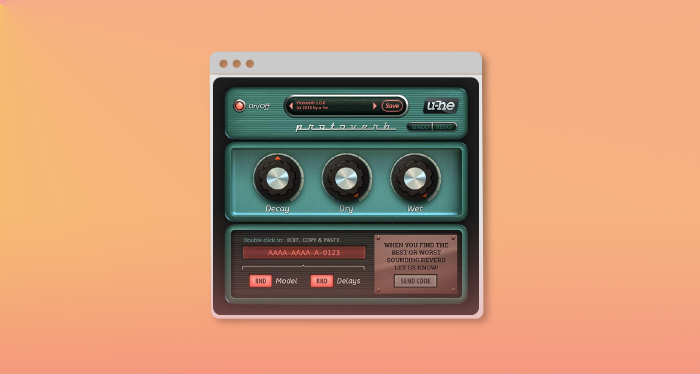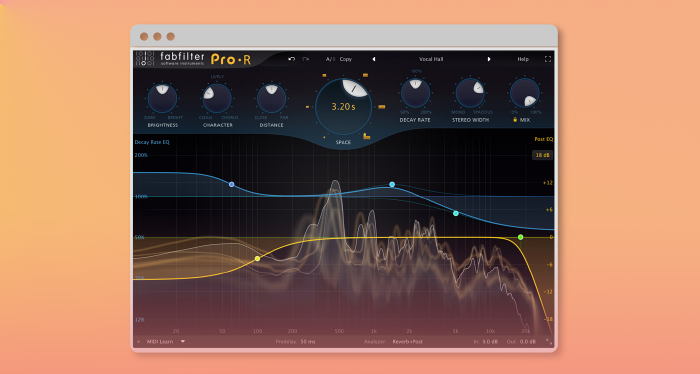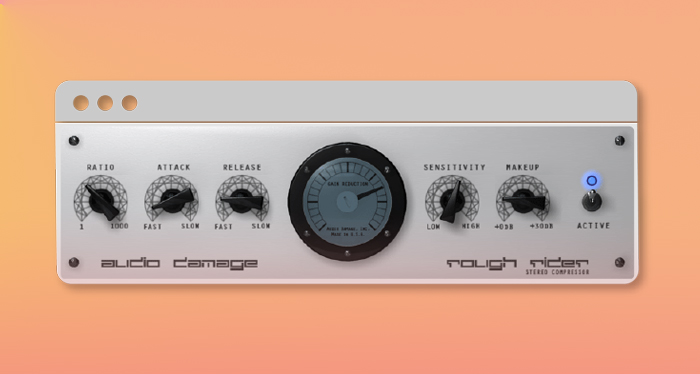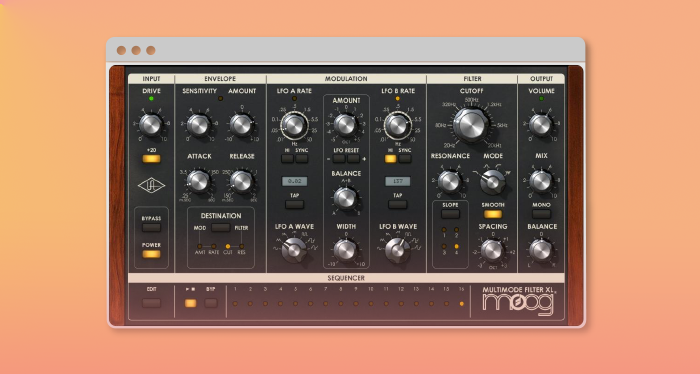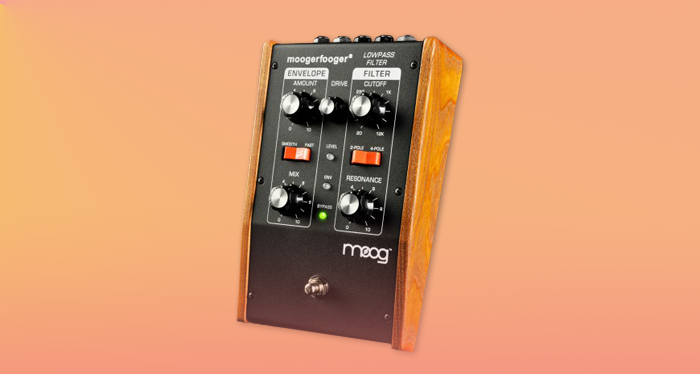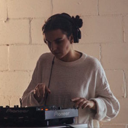
Audio Effects Explained: The Pro Guide to Shaping Your Sound
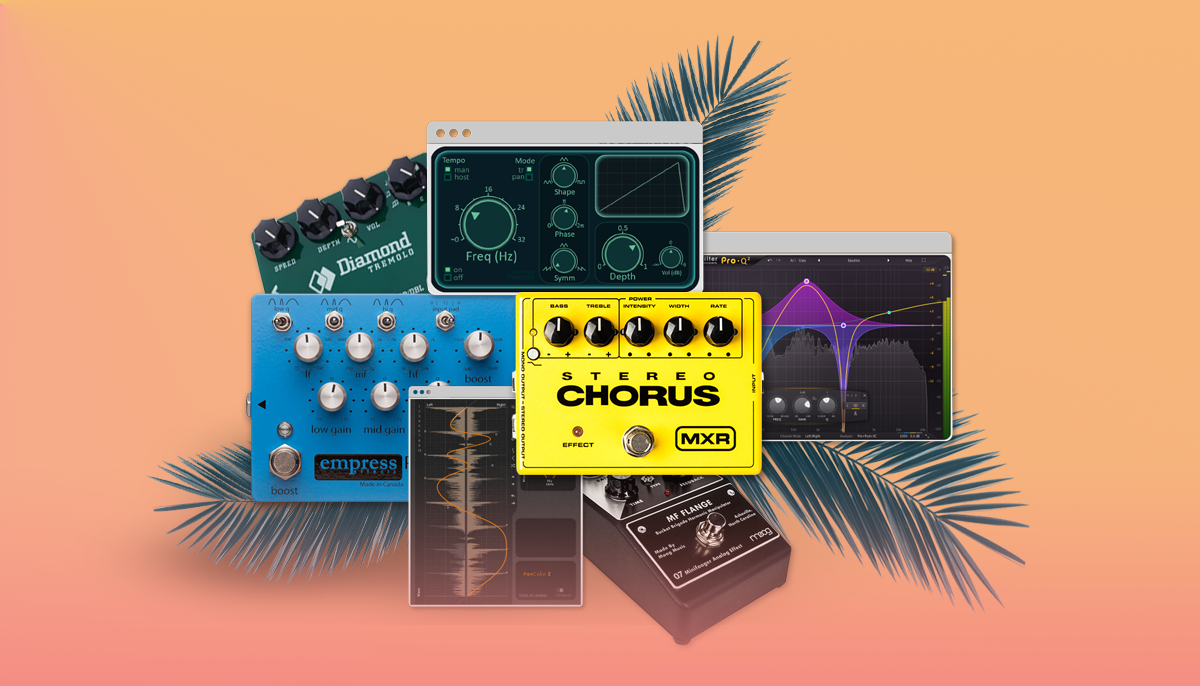
Composers work with notes, melodies and chord progressions to write a song. The music producer`s toolbox is made of another kind of creative tool: audio effects.
Of course producers need to understand musical theory. But audio effects are their bread and butter when it comes to mixing music.
They’re at the core of how producers shape sound and make it into music. Audio effects turn a so-so mix into a powerful finished track.
Whether working with analog effects or digital effects, all producers should get to know their tools inside out.
The problem nowadays is there’s so much to choose from: effects plugins for your DAW, stompboxes, pedals, multi-effects processors… Choosing the right audio effects to find the perfect sound is key.
So how do you avoid getting lost in a sea of choices?
This guide will help you learn the concepts at the core of each audio effect and give you the knowledge you need to make the right decisions for your sound.
So without further delay here’s each audio effects we’ll explore in this article:
- Panning
- Delay and Echo
- Reverb
- Chorus
- Distortion
- Equalization (EQ)
- Compression
- Tremolo
- Flanger and Phaser
- Filters
What Are Audio Effects?
Audio effects are hardware or software devices that manipulate how an audio signal sounds. Effects can be controlled via various parameters including rate, feedback or drive. They are useful when playing live or as studio tools while recording or mixing music.
This article explains all the core effects:
- Modulation effects—Chorus, Tremolo, Flanger and Phaser
- Time-based effects—Reverb, Delay and Echo
- Spectral effects—EQ and Panning
- Dynamic effects—Compression and Distortion
- Filters
By the end of this article, you’ll know what audio effects are, how they work and how to use them. To get you started, we’ve packed TONS of recommendations for paid and free VST plugins, and audio FX pedals.
This is by no means an exhaustive list—it’s more of a launchpad for your effects journey. So let’s start with the basics and go from there!

What is Panning?
Panning is the distribution of a sound signal in a stereo (or multi-channel) field. Panning creates the illusion of a sound source moving from one part of the soundstage to another.
How Does Panning Work?
Humans have two ears. Our brain processes the difference in timing between our left and right ear. This gives us the ability to identify the placement of a sound in a 3D space!
Stereo sound systems have evolved from a single speaker to a set of two, left and right (L-AND-R… get it?). This has allowed us to move from mono to stereo sound playback.
Panning works by letting through more or less of a signal into each speaker, creating various spatial effects.
What Does Panning Sound Like?
When something is ‘hard panned’ to one side, you hear it coming from only from that side.
When something is panned to the middle, you will hear it coming from between your speakers at the ‘phantom center’ (you hear it centered even though there is no speaker in the center).
Play a sound and grab your panning knob. If you turn it gradually from one side to the other, you’ll hear the sound travel across your stereo field from one side to the other.
Common Uses of Panning
Panning is a great way to artificially position your sound in a specific place in your stereo field. It also lets you prevent muddiness and masking in your mix (when two sounds cover each other up).
Using auto-pan effects lets you sweep a sound across the stereo field over a period of time, creating a sense of the sound moving between the left and right.
The center of your mix is usually the busiest. It’s common to keep the low frequency elements (bassline, drums) and lead elements (vocals) panned to the center because they ground your mix.
Other instruments are panned somewhere to the right or left. But where do you put them? The best rule of thumb is to keep a balance: if you pan instrument slightly to the right, pan something with a similar frequency range at the same spot to the left.
Hard panning is generally avoided unless it’s a creative choice. But rules are made to be broken, am I right?
Read more about how to use panning to get a wider mix.
Best Panning Plugins and Panning Pedals
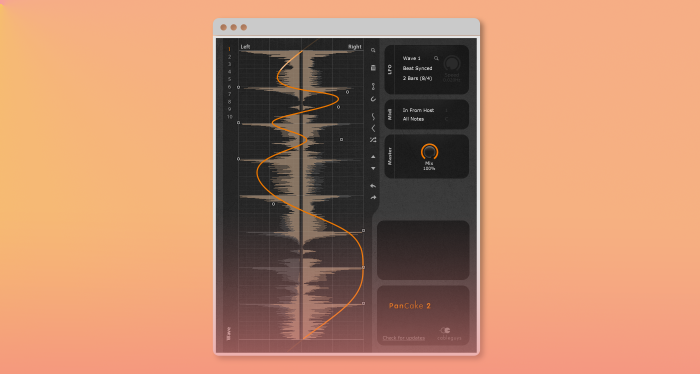
Free Panning Plugin: Cableguys PanCake 2

Paid Panning Plugin: Soundtoys PanMan ($129 USD)
Panning Pedal: Electro Harmonix Pan Pedal ($91 USD)

What is Echo and Delay?
Delay is an audio effect that records an audio signal for playback a set period of time after the original signal. Delay can be played back in different ways to achieve sounds such as echoes that decay over time, or a pronounced repeated doubling effect that adds new layers to a recording.
Delay is one of the most important effects. In fact, It’s the foundation for other effects as well including chorus and reverb. However, the current definition of delay is normally used to describe more pronounced echo effects.
How Does Delay Work?
Most delays work by playing back the dry signal while also playing back the wet or ‘delayed’ signal shortly after the original.
Early tape delay units featured a recording head and playback head(s) (also called a tap) a few inches apart. The result was an echoing of the recording signal shortly after it was played. Delay units with multiple taps and tape settings eventually gave artists the ability to playback multiple echoes at different intervals with a greater level of control.
More modern solid state and digital effects units use a recorded buffer to emulate the playback head effect of older delay units. The incoming signal is stored and played back depending on tweaks to the parameters that control the echoing effect.
What Does Delay Sound Like?
There are many common applications of delay. But there a are a couple that are more prominent than others.
Perhaps the most iconic example of delay is the Slapback effect used on early 50’s rock records—most notably Sam Phillips and Sun Records artists such as Elvis.
Slapback delay is achieved by playing back the wet signal between 70 – 120 ms after the dry signal is played. The result is a quick doubling effects that fills out an arrangement with quick subtle delays with a fast decay.
More pronounced uses of delay were popularized by dub and reggae throughout the 70s and 80s. The effects of delay are a lot more prevalent in these examples as sounds are repeated, echoed, and fed back to achieve richer layering to create a rhythmic symphony of psychedelia.
More pronounced delay effects like these still resonate throughout music today and give musicians a whole palette of experimental possibilities. Even the simplest arrangement can be filled out using creative delay techniques.
Common Uses of Delay
Shorter uses of delay, like slapback or doubling effects, are useful for filling out a performance, especially vocals or guitar.
Drawn out delays with multiple taps are useful for creating whole new rhythms and layers in a performance. Multi-tap delays are common in dub and techno to create the swirling synth lines common to the genres.
Learn about five of our best delay techniques.
Delay Plugins and Delay Pedal
 Free Delay Plugin: ATK Stereo Universal Delay
Free Delay Plugin: ATK Stereo Universal Delay
 Paid Delay Plugin: Audio Damage Dubstation ($39 USD)
Paid Delay Plugin: Audio Damage Dubstation ($39 USD)
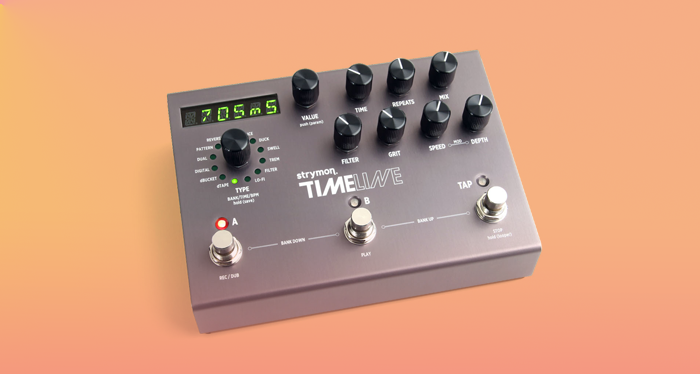 Delay Pedal: Strymon TimeLine ($449 USD)
Delay Pedal: Strymon TimeLine ($449 USD)

What is Reverb?
Reverb is short for reverberation. Reverb happens daily, but we don’t always notice it.
When a sound occurs, two things happen: A) the direct sound hits your ears B) a bunch of other sound waves bounce off of surfaces before reaching your ears. Those other sound waves will reach your ears later and with less energy (therefore quieter).
Reverb is a bunch of echoes all happening at the same time, so you hear them as one single effect: reverb.
There’s different kinds of reverb in many types of spaces. The most obvious examples of reverberant spaces are tunnels, cathedrals, halls and caves.
How does reverb work?
The most readily available reverb is the one found in natural spaces.
In music gear (such as pedals and amps), electromechanical analog reverb is created using a metal plate or spring that picks up echoes and vibrations inside the tank and transforms it into signal with an analog circuit.
Digital reverbs and reverb plugins calculate the needed delay, level, frequency response and algorithmically generate multiple echoes. Reverb plugins do thousands of calculations per second—that’s why they’re often very CPU-intensive.
What Does Reverb Sound Like?
Reverb is echo-y, it makes things sound like they’re in a particular kind of room. Reverb brings some sustain to a sound and makes it stick around for longer—often referred to as reverb tails. It gives a dreamy, even solemn quality to your signal (think a choir in a big cathedral).
Reverb makes things sound further away in the mix if you push the wetness and bring down a lot of the original dry signal. It can widen the mix and make it sound bigger and fuller.
Common Uses of Reverb?
Use reverb to shape the sound, space, time and mood of an instrument or whole track.
Reverb adds fullness, spaciousness and depth to a sound depending on what reverb types you’re using. It smoothes out little hiccups and adds sustain to your sound.
Read about five of our best reverb tips.
Hot Tip: Use reverb creatively by sampling long reverb tails and using them as a synth pad (video).
Reverb Plugins and Reverb Pedal
Free Reverb Plugin: U-He Protoverb 1.0
Paid Reverb Plugin: FabFilter Pro-R ($199 USD) </strong
Reverb Pedal: Electro-Harmonix Cathedral Stereo Reverb ($219 USD)

What is Chorus?
Chorus is an effect obtained when similar sounds with slight variations in tuning and timing overlap and are heard as one.
It happens naturally when multiple sources make a similar sound overlap. Think of a real life choir singing multiple parts at the same time. They all overlap to form a distinct sound. The chorus effect does the same thing!
How Does Chorus Work?
Chorus as an electronic effect works in the following way: the chorus audio processor (whether a pedal, effects unit or plugin) makes copies of the original audio signal and applies delay and pitch-modulation (using LFOs) to those copies.
A stereo chorus does the same, with added panning in the delays and offset phase on the LFO. This causes those added copies and modulations to go between your left and right. The effect will sound fuller because of the movement in your stereo field.
What Does Chorus Sound Like?
It creates a fuller, thicker sound that subtly moves. It adds harmonic content to your original sound and ‘beefs-it up.’
Common uses of chorus
Chorus adds complexity and movement. It’s also that classic 80’s sound!
A stereo chorus widens your stereo image. Guitarists use it to make their tone ‘dreamy’ or thicken their bass guitar sound. It’s also very common as an effect on synthesizers, organs and vocals.
For example: Use chorus to fatten the sound of your monophonic bass synth sound and make it sound ‘meaner’.
Chorus Plugins and Chorus Pedal
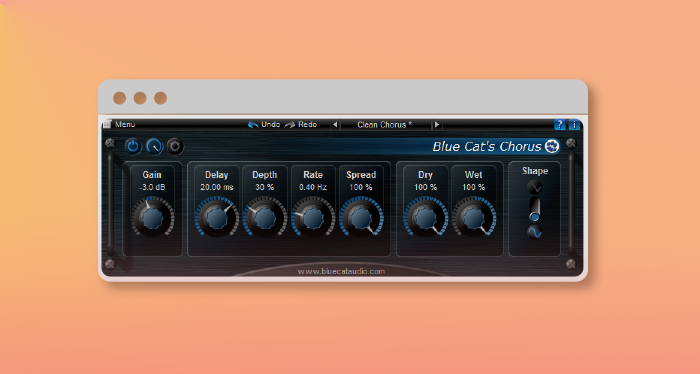 Free Chorus Plugin: Blue Cat’s Chorus
Free Chorus Plugin: Blue Cat’s Chorus
 Paid Chorus Plugin: Brigade Chorus by UA ($99 USD)
Paid Chorus Plugin: Brigade Chorus by UA ($99 USD)
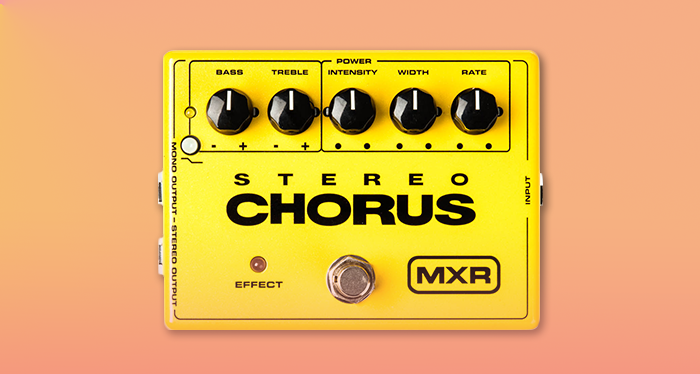 Chorus Pedal: MXR Stereo Chorus ($99 USD)
Chorus Pedal: MXR Stereo Chorus ($99 USD)

What is Distortion?
Distortion is an overloading of the audio circuit that causes the signal to clip. It might sound like something you wanna stay away from—but when used right it’s very effective as a creative tool. Bit-crushing is the lo-fi digital equivalent of the distortion effect.
How Does Distortion Work?
Distortion changes your original signal by pushing the sound to clip and compress. This adds harmonic content and colors the sound in a pleasant way. Bit-crushing works by reducing the resolution of a sound—specifically the sampling rate or the bit rate.
What Does Distortion Sound Like?
Distortion comes in many flavours, depending on what kind and how much you apply. Different types of circuits will produce different kinds of distortion.
For example: Distortion obtained with tubes is often warmer and adds harmonics that thicken the sound. Distortion made with transistors is often harsher and more dissonant because it adds odd harmonics. Bit-crushing sounds crunchy—think video game music.
For a in-depth look at the differences between distortion, overdrive and fuzz, check out our in-depth distortion guide.
Common Uses of Distortion
Distortion is commonly used with electric guitars and increasingly on synths. It can be achieved with pedals, effects units, rackmounts, VSTs or is sometimes built into amplifiers and pre-amps.
Distortion makes your sound fatter and fuller. It adds complexity and body to your sound.
Distortion Plugins and Distorial Pedal
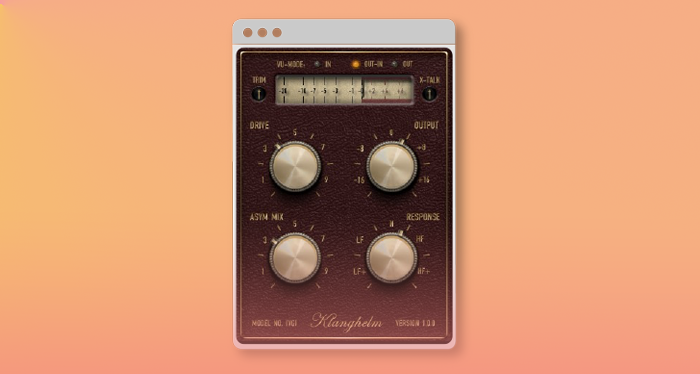 Free Distortion Plugin: Klanghelm IVGI
Free Distortion Plugin: Klanghelm IVGI
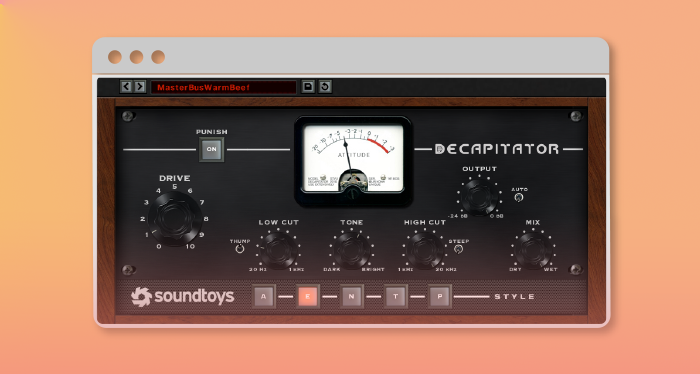 Paid Distortion Plugin: Soundtoys Decapitator ($99 USD)
Paid Distortion Plugin: Soundtoys Decapitator ($99 USD)
 Distortion Pedal: Boss DS-1 ($49 USD)
Distortion Pedal: Boss DS-1 ($49 USD)

What is Equalization?
Equalization (or EQ) is the cutting or boosting of a particular frequency (or range of frequencies) in the frequency spectrum.
Humans can hear audio frequencies roughly between 20 and 20 000 Hertz (Hz). Any sound that human ears perceive sits somewhere in that frequency spectrum.
An Equalizer (EQ) divides that spectrum into sections (called ‘bands’) that you use to cut or boost parts of your sound.
How Does Equalization Work?
EQing is like sculpting: it shapes the existing frequencies of your sound. It doesn’t add new frequencies per se.
By cutting or boosting certain frequencies, EQ shapes the tone and character of your sound. EQing also changes the balance between the frequencies that are already there.
What Does Equalization Sound Like?
EQ changes the character of your sound either very subtly or dramatically. Cutting high end will make your sound darker. Boosting the high end will make it brighter.
The sound of EQ will vary a lot depending on how much you use and on what frequencies.
Common Uses of Equalization
EQ is a key tool for good mixing. It gives you the power to carve out space in the frequency spectrum for each of your sounds to get them sitting right in the mix.
Without EQ, your mix could sound dull or muddy due to certain sounds masking each other.
EQ is used to remove undesirable elements from a recording. EQ is also a way to boost the key elements in your mix.
Read about creative versus corrective EQ approaches. Also learn how ex-Majical Cloudz producer and Solange collaborator Matthew Otto uses EQ for vocals.
EQ Plugins and EQ Pedal
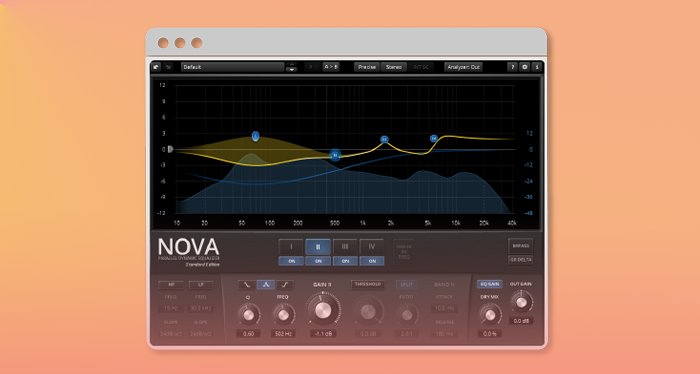 Free EQ Plugin: TDR Nova
Free EQ Plugin: TDR Nova
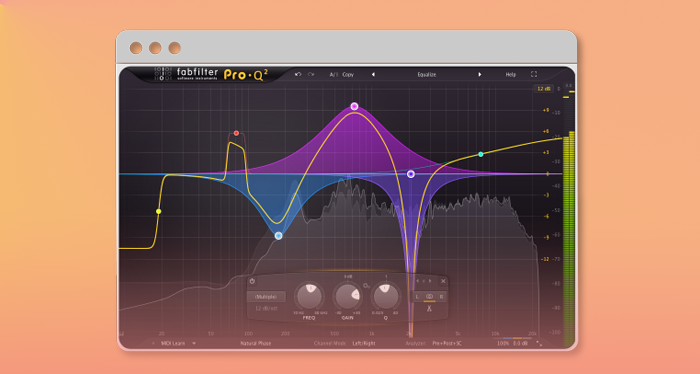 Paid EQ Plugin: FabFilter Pro-Q 2 ($179 USD)
Paid EQ Plugin: FabFilter Pro-Q 2 ($179 USD) 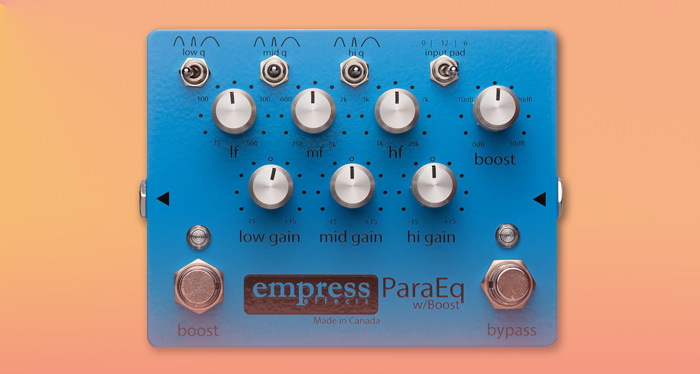 EQ Pedal: Empress ParaEQ ($249 USD)
EQ Pedal: Empress ParaEQ ($249 USD)

What is compression?
Compression is the reduction of dynamic range—the difference between the loudest and quietest parts of an audio signal. When compression is applied, the quieter parts of the signal are boosted and the louder ones are attenuated.
How does compression work?
Compressors reduce the gain of your signal (‘GR’ stands for Gain Reduction on your DAW compressor). Compression reduces the dynamic range of a signal. The dynamic range is the difference between the loudest and the quietest parts of a signal.
Compressors lower the volume of loud peaks–they even out the notes that stick out in the mix. This allows you to bring up the gain of the whole signal without clipping.
What does compression sound like?
Ideally compression sounds punchier and tighter. Compression also allows you to get more average loudness.
Over-compression sound crunched, dull and noisey.
Sidechain compression is a classic sound in dance music: it sounds like it’s pumping. Listen to Lady Starlight‘s Untitled for an example.
The beauty of compressors is that each of them is unique and will add a different color to your sound. So get to know your compressors well.
Common uses of compression
So overall, using compressors right gives you a more polished and punchier sound without clipping.
It allows you to get get more overall average loudness and keep the peaks in check. By reducing the dynamic range of certain sounds it lets you balance levels between instruments in a mix more effortlessly.
Read more about compression parameters and how to use them.
Compression Plugins and Compression Pedal
Free Compression Plugin: Audio Damage RoughRider
Paid Compression Plugin: DCAM BusComp ($29 USD)
🧠 Hot tip
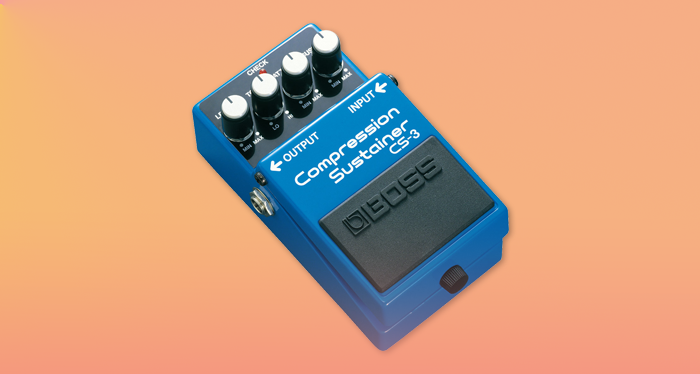 Compression Pedal: Boss CS- 3 Compression Sustainer ($78 USD)
Compression Pedal: Boss CS- 3 Compression Sustainer ($78 USD)
Psssst visit this post for some more free compression plugins.

What is tremolo?
Tremolo is a modulation effect created by varying the amplitude (volume) of a signal. It gives a trembling effect—the word ‘tremolo’ itself is italian for trembling.
It’s often confused with vibrato, which is a modulation of the pitch. Many Fender guitars have a misnamed ‘tremolo arm.’ Often that’s technically a vibrato arm because it varies the pitch, not the amplitude.
How does tremolo work?
Electronic tremolo effects are obtained with an LFO modulating the amplitude up and down at varying speeds. You’ll be able to control how fast the modulation happens with a ‘rate’ knob, and how dramatic the volume change will be with a ‘depth’ knob.
What does tremolo sound like?
It sounds pulsating and ‘watery.’ It can sound subtlety trembling (fading up and down if you’re using a triangle or sine LFO) or alternating between on and off (when the LFO is a square wave), depending on how hard you push the parameters.
Common uses of Tremolo
Tremolo gives a sense of movement, tension or drama. It makes a sound more rhythmic, percussive or stuttering. It’s also used to create a pulsating effect.
In terms of acoustic instruments, tremolo is achieved with bowed stringed instruments by playing very fast back and forth with the bow (or pick, on a guitar).
You’ll also find a tremolo knob on a lot of amps, effects boxes and keyboards.
Tremolo Plugins
 Free Tremolo Plugin: Pecheneg Tremolo
Free Tremolo Plugin: Pecheneg Tremolo
 Paid Tremolo Plugin: Soundtoys Tremolator ($129 USD)
Paid Tremolo Plugin: Soundtoys Tremolator ($129 USD)
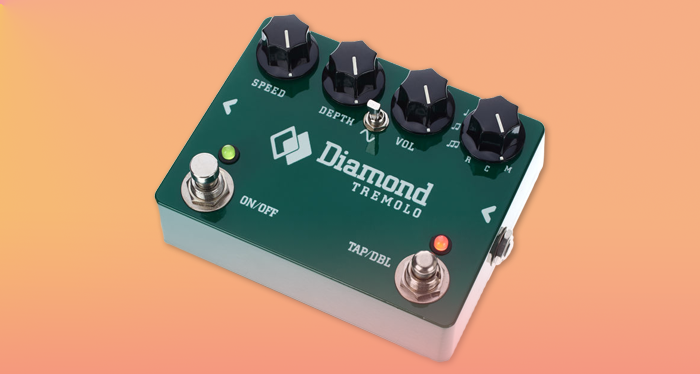 Tremolo Pedal: Diamond Pedals Tremolo ($249 USD)
Tremolo Pedal: Diamond Pedals Tremolo ($249 USD)
What is Flanging and Phasing?
Flanging and Phasing are modulation based effects. That means that your original signal is modulated by another one, usually a Low Frequency Oscillator (LFO).
How does Flanging and Phasing work?
Flanging, while sonically similar to Phasing, is functionally closer to a Chorus. It uses a short delay (0.1ms – ~10ms) and modulates that against the dry signal with an LFO. If you kept extending the delay time on a flanger you’d end up with a chorus.
A phaser uses All-Pass Filters instead of a delay line, but it’s a broadly similar concept and sound to the flanger. The filters create notches when mixed back with the dry signal and an LFO sweeps them through the frequency range. The more “stages” a phaser has the more notches and therefore the more intense the sound will be.
Both flangers and phasers have the ability to feedback the processed signal to the input which further reinforces and intensifies the effect. At extreme settings you can get feedback and uncontrolled “howling” noises (picture a humpback whale singing through a Marshall stack).
What does Flanging and Phasing sound like?
Flangers and phasers are recognizable for their ‘swooshing’ and swirling effect. These effects often have a watery quality to them at higher speeds.
Phasing is generally more subtle than flanging. Both sound generally better (and less corny) if used with caution—but experimenting is key!
Common uses of Flanging and Phasing?
Flanging and Phasing are commonly used on guitars and synthesizers. You’ll hear it on tons of records, especially funk and rock from the 70’s and beyond.
Guitar legends like Pink Floyd’s David Gilmour loved phasing—which you’ll hear on tracks like “Shine On You Crazy Diamond” or “Have A Cigar”.
One of many great examples of flanger is Anthony Jackson’s bassline in a funk classic “For The Love Of Money” by The O’Jays.
Flanger Plugins and Flanger Pedal
 Free Flanger Plugin: TAL-Flanger
Free Flanger Plugin: TAL-Flanger
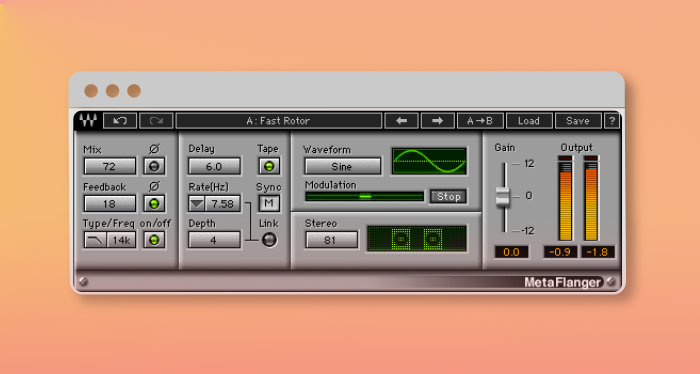 Paid Flanger Plugin: Waves MetaFlanger ($29 USD)
Paid Flanger Plugin: Waves MetaFlanger ($29 USD)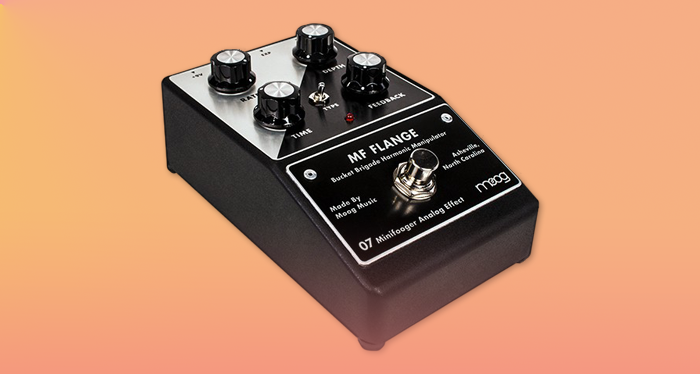 Flanger Pedal: Moog MF Flanger ($209 USD)
Flanger Pedal: Moog MF Flanger ($209 USD)
Phaser Plugins and Phaser Pedal
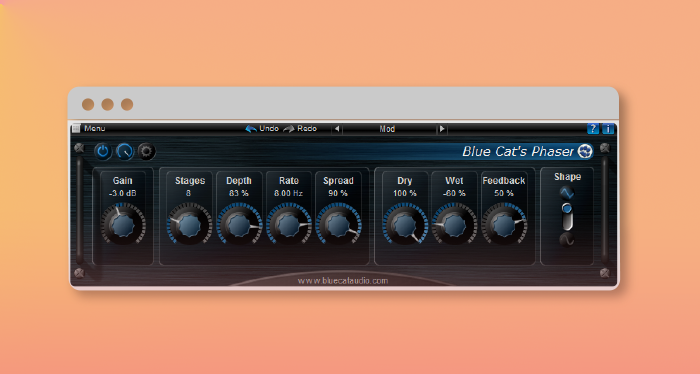 Free Phaser Plugin: Blue Cat Audio Phaser
Free Phaser Plugin: Blue Cat Audio Phaser
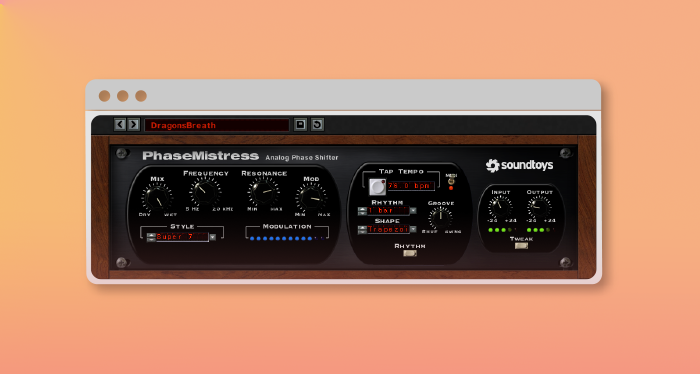 Paid Phaser Plugin: Soundtoys PhaseMistress ($129 USD)
Paid Phaser Plugin: Soundtoys PhaseMistress ($129 USD)
 Phaser Pedal: MXR Phase 90 ($80 USD)
Phaser Pedal: MXR Phase 90 ($80 USD)
What is an Audio Filter?
An audio filter attenuates (turns down) a set of frequencies above or below a determined threshold—called the ‘cutoff frequency.’ They’re often found inside of EQs or as stand alone plugins (think Ableton Live’s native Auto Filter effect).
How do Audio Filters Work?
The most common types of filters are High-Pass Filters (HPF), Low-Pass Filters (LPF) and Band-Pass Filters (BPF). These are defined by their shape and ‘slope.’
LPFs let through all the frequencies below the cutoff frequency—and attenuate those above.
HPFs let through all the frequencies above the cutoff frequency—and attenuate those below.
BPFs let through all the frequencies in the determined band, and attenuate everything below and above.
The steepness or aggressiveness of a filter is determined by its slope. The lower (or gentler) the slope, the less aggressively it attenuates the frequencies below or above its cutoff frequency. A 6dB per octave slope is gentle, whereas a 48dB per octave will have a much more audible effect.
Most filters also have a “Resonance” control, which exaggerates the frequency band around the cutoff. At extreme settings some filters will self-oscillate and can even be played as an additional oscillator.
What do Audio Filters Sound Like?
Filters can be either very subtle of very dramatic, depending on how much you are cutting and how steep your slope is. They color your sound—making it darker (with a LPF) or brighter (with a HPF).
Common Uses of Audio Filters
Filters are used both for corrective and creative reasons. They’re a key tool in the producer’s arsenal for carving space in a mix for certain instruments and frequency ranges.
For example, when you’re layering drums, filters will help you shape the tone of your kicks, snares, etc.
Many modern VSTs allow for completely unique curves for your filter shapes.
They’re also the DJ’s bread and butter for creating exciting build-ups and transitions. It’s a creative application of filtering that works as a music production tool as well.
Filter Plugins and Filter Pedal
Free Filter Plugin: TAL-Filter-2
Paid Filter Plugin: Moog Multimode Filter Collection ($249 USD)
Filter Pedal: MF-101 Lowpass Filter ($299 USD)
Flex Your Audio FX
Audio effects are the producer’s arsenal for turning a raw mix into a musical masterpiece. A good effects chain is the key to crafting your unique sound.
Learning how effects work and how to best use them is the key to navigating the sea of plugins and stompboxes that are out there today.
If you know the basics, you will be able to choose your weapons of choice and make the most out of them.
So jump in, and flex your FX!
Gear guides, tips, tutorials, inspiration and more—delivered weekly.
Keep up with the LANDR Blog.

